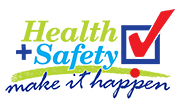
ETFO Niagara acknowledges the land on which we gather is the traditional territory of the Haudenosaunee and Anishinaabe peoples, many of whom continue to live and work here today. This territory is covered by the Upper Canada Treaties and is within the land protected by the Dish with One Spoon Wampum Agreement.
Today this gathering place is home to many First Nations, Métis and Inuit peoples and acknowledging reminds us that our great standard of living is directly related to the resources and friendship of Indigenous people.
ET FO Provincial has a health and safety website, etfohealthandsafety.ca, a resource containing a wealth of information on topics such as workplace violence, infection prevention and control, as well as various hazards that may occur in a working environment.
FO Provincial has a health and safety website, etfohealthandsafety.ca, a resource containing a wealth of information on topics such as workplace violence, infection prevention and control, as well as various hazards that may occur in a working environment.
If there is a concern, it is a worker’s duty to inform their immediate supervisor of the issue. The worker may then be directed by the supervisor to fill out an appropriate form to report an issue.
The Workplace Violence Reporting Process Roadmap, found in the Workplace Violence in School Boards: A Guide to the Law, is a helpful visual to assist members in navigating the reporting process. Click the tabs to the right access information on the types of workplace violence and/or harassment that need to be reported and the appropriate form(s) to use.
For a general health and safety issues a member should fill out the DSBN Employee’s Report of Health and Safety Concern form, which is available from the site supervisor.
If you have any questions about health and safety in your worksite, talk to your Health and Safety site rep or contact the Local.
You can watch some of the videos from ETFO’s Action on Violence Toolkit below.
The Occupational Health and Safety Act defines workplace violence as “the act of committing, attempting to commit, or threatening to commit an act using physical force that does or would cause physical injury”.
When to Complete a Staff Violent Incident Report
If you experience or witness workplace violence, including physical and/or verbal aggression, you must report it using the Staff Violent Incident Reporting Tool. This tool can be found in the My Applications column of the Staff Portal or eBase on your DSBN Apps page. DSBN Administrative Procedure 5-27, Workplace Violence Prevention Program, sets out the legislated reporting requirements for reporting workplace violence.
When to Complete a Safe Schools Progressive Discipline Report
If the violent incident you are reporting could result in suspension or expulsion, you must also complete a Safe Schools Progressive Discipline Report. You can find this report linked at the top of the Workplace Violent Incident Reporting Tool or in the My Applications column of the Staff Portal under Progressive Discipline Reporting Tool. Administrative Procedure 3-26 lists the behaviours which are considered serious student incidents.
This include but are not limited to:
Note: Reporting of serious student incidents is required under s300.2 of the Education Act. Here you will find the full list of behaviours that could be considered grounds for suspension or expulsion, which constitute a serious student incident.
If a worker is injured or has lost time due to an incident of workplace violence the incident must also be reported through the DSBN’s Workplace Safety and Insurance Board procedures using DSBN Administrative Procedure 5-02, Reporting Employee Workplace Accidents. If the incident involves a student, it must be also reported under the Education Act using DSBN Administrative Procedure 3-26, Student Discipline.
If you have questions about any of these forms, please contact the Local office.
The Occupational Health and Safety Act defines workplace harassment as: “engaging in a course of vexatious comment or conduct against a worker in a workplace that is known or ought reasonably to be known to be unwelcome.”
This may include:
The Occupational Health and Safety Act defines workplace sexual harassment as:
This may include:
Incidents of workplace harassment or sexual harassment should be reported under the DSBN Administrative Procedure 7-01, OHRC and OHSA Workplace Harassment. There are forms that are available for accessing both informal or formal complaint procedures.
Contact the Local if you have questions or concerns about incidents of workplace harassment or sexual harassment.
It is my TPA year, can my acting vice principal conduct my evaluation?
No. As per the Collective Agreement article 27.01: Only supervisory officers and elementary principals and vice principals shall evaluate a teacher’s competence.
Temporary VPs are still ETFO members, as such, they cannot evaluate other teachers. If you have questions, please contact the Local office.
How much time am I entitled to for lunch? What if I travel between two schools?
Each teacher shall receive an uninterrupted and continuous period of not less than 40 minutes per day for lunch, free from regularly scheduled supervisory or teaching duties (Article 18.01). Article 18.02 states that you shall have adequate time to travel between locations, exclusive of prep time. If travel must occur during recess or lunch, the teacher will not be assigned supervisory or bus duties beyond the instructional day, except in an emergency.
What can I use my sick days for?
Article 6.01 a) of the Collective Agreement states:
The Sick Leave Benefit Plan will provide sick leave days and short-term disability days for reasons of personal illness, personal injury, including
personal medical appointments and personal dental appointments. Routine medical and dental appointments will be scheduled outside of working hours where possible.
Do I get preparation time on Professional Activity days?
No. Article 18.03 (i) of the Collective Agreement states that Professional Activity Days shall not be considered instructional days for the purpose of scheduling preparation time. In other words, a P.A. day is considered “Day Zero” in the cycle, whereas preparation time is scheduled on a numbered cycle instructional days.
I just finished a course, can I apply for PD Fund reimbursement?
You must apply for funding at least one day prior to the start of your course/workshop/conference. If you are approved, upon completion of the course, submit your statement of expense form along with the required documentation outlined in the PD Fund Operating Procedures.
Does Policy/Program Memorandum #128 Provincial and School Board Codes of Conduct personal mobile device policy only apply to students?
No. PPM 128 (Section 4: Expectations) specifically states, “It is expected that teachers and staff: model the standards of respect civility, and responsible citizenship. This includes modelling appropriate use of personal mobile devices. Educators are not to use personal mobile devices during instructional time, unless explicitly for work-related purposes.”
ETFO Niagara Teacher Local
620 York Road Niagara-on-the-Lake, ON L0S 1J0
905-641-2911 or 1-866-419-9484
Brian Barker: brian.barker@etfoniagara.ca
Christine McGovern: christine.mcgovern@etfoniagara.ca
Jennifer Sims Murray: jennifer.simsmurray@etfoniagara.ca
2024 © All Rights Reserved: ETFO Niagara Teacher Local. Powered by Union365